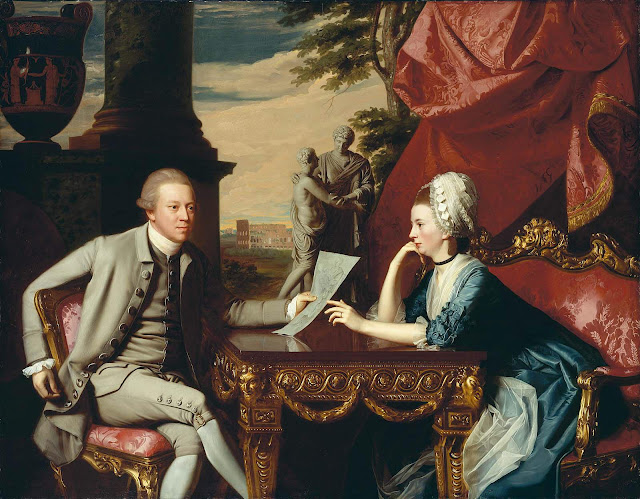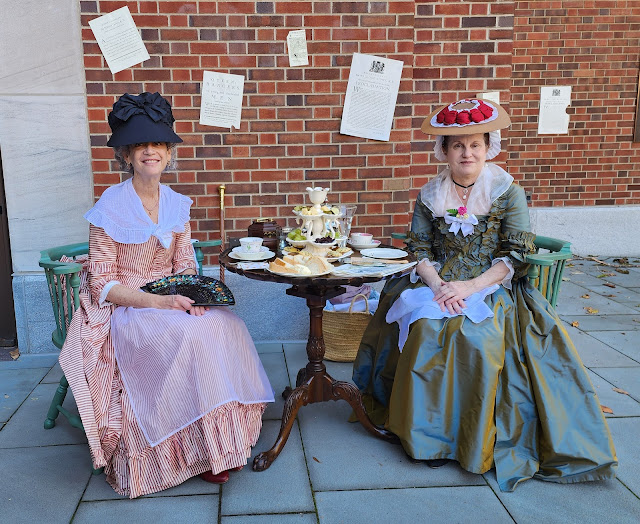I've been looking at a lot of sack back garments. After making two short sacks with different constructions, I thought I would do the same with gowns. Since I often portray members of the upper class, I thought I would focus on day gowns rather than elaborate ball gowns. You find a number of sack back gowns in portraits of women of all ages.
Several years ago, I made a chintz sack using the JP Ryan pattern. It was a typical earlier sack style with a compere front stomacher. This style has no waist seam which is typical of earlier sacks. I've noted a lot of extant sacks that are made more like English gowns with pleated skirts on the front bodice. They seem to be a bit later--late 60s and 70s. I've always loved the Copley portrait below of Ralph and Alice Izard from South Carolina which is from 1776 when they were in Europe. It's difficult to see many of the details of this gown. The sleeves are mid to late 70s styled with sabot cuffs. There is pinked scalloped trim on the robings and above the sleeve cuff. The trim looks pleated in some areas and gathered in others. There is a gathered "cover" on the cuff and narrow elbow ruffles at the sleeve opening. The stomacher cannot be seen but I have to assume that with trim on other parts of the gown, the stomacher would have similar pinked scalloped trim as well. The gown skirts look plain and the petticoat cannot be seen.
Mrs. Izard's accessories include a very well-known fancy dormeuse style cap, a sheer half handkerchief with narrow stripes and a sheer apron. The apron fascinates me because I cannot see how it is being worn. It's not tied over any part of the gown from what I can see. Was she wearing it under her gown or was she just holding it in her lap to protect her gown? I love that she is wearing a simple black ribbon on her neck.
I added the same ruched trim to the robings then added it to the stomacher.
The gown was worn with a late 70s bum pad, sheer half handkerchief, flower breast knot and a sheer cap.
This changeable silk is incredibly difficult to photograph due to the colors. I'm very happy with this gown and see myself wearing it a lot. I had started making a black silk sack side by side with it but set that one aside to finish this one for my deadline. Now I need to go back and finish the black gown which will have some different features. Silk sacks are glorious to wear. Why save them for formal occasions? If you do choose to make one as a day gown, remember to study plenty of period images to see how they were worn!














